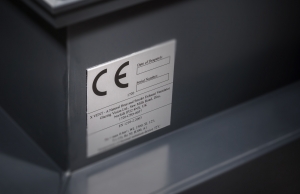Introduction
In today’s global marketplace, ensuring that products meet the necessary safety, health, and environmental standards is crucial for both manufacturers and consumers. CE certification, short for Conformité Européenne, is a mandatory conformity marking for products sold within the European Economic Area (EEA). This comprehensive guide will delve into the significance of CE certification, its benefits, the certification process, and how it empowers businesses to demonstrate compliance and excellence in the European market. CE certification ensures compliance with European safety standards, affirming product quality and safety. It signifies conformity with essential health, safety, and environmental protection requirements. By obtaining CE certification, products gain access to the European Economic Area, fostering consumer trust and facilitating market access.
Understanding CE Certification
CE certification is a declaration by the manufacturer that a product meets the essential requirements of relevant European Union (EU) directives and regulations. It signifies that the product complies with rigorous safety, health, and environmental standards set forth by the EU, ensuring its suitability for sale and use within the EEA, which includes the EU member states as well as Iceland, Liechtenstein, and Norway.
Products requiring CE certification encompass a wide range of categories, including machinery, electrical equipment, medical devices, toys, construction products, and personal protective equipment, among others. Each product category is subject to specific EU directives and regulations outlining the essential requirements and conformity assessment procedures necessary for CE marking.
Benefits of CE Certification
Obtaining CE certification offers numerous benefits for manufacturers seeking to access the lucrative European market:
- Market Access: CE certification is a legal requirement for products sold within the EEA. By obtaining CE marking, manufacturers gain access to a market of over 500 million consumers, facilitating trade and commerce across borders within the EU and its associated countries.
- Compliance Assurance: CE certification provides assurance to consumers and regulatory authorities that the product meets the stringent safety, health, and environmental standards mandated by EU directives. This helps build trust and confidence in the product’s quality and reliability, enhancing its marketability and competitiveness.
- Risk Mitigation: CE certification helps manufacturers mitigate risks associated with non-compliance, including product recalls, liability claims, and regulatory penalties. By adhering to EU regulations and standards, manufacturers demonstrate their commitment to product safety and minimize the likelihood of legal and financial repercussions.
- Streamlined Distribution: CE marking eliminates the need for separate national certifications within the EEA, simplifying the process of bringing products to market and reducing administrative burdens and costs associated with compliance testing and documentation.
- Global Recognition: While CE certification is specifically required for products sold within the EEA, it also enjoys international recognition as a symbol of compliance with European standards. This can enhance the product’s appeal to customers and partners worldwide, opening doors to global markets beyond the EEA.
The Certification Process
The process of obtaining CE certification involves several key steps, beginning with determining the applicable EU directives and standards for the product category in question. Manufacturers must carefully assess the product’s design, intended use, and potential hazards to ensure compliance with relevant requirements.
Once the applicable directives have been identified, manufacturers must conduct a conformity assessment to demonstrate compliance with the essential requirements. The conformity assessment process varies depending on the product category and may involve self-assessment, type examination by a notified body, production quality assurance, or a combination of these methods.
After completing the conformity assessment, manufacturers must affix the CE marking to the product and compile a technical file documenting compliance with EU regulations. This technical documentation must be kept on file and made available to competent authorities upon request.
It’s important to note that CE is a self-declaration process, meaning that manufacturers are responsible for ensuring compliance with EU regulations and standards. However, in certain product categories deemed high-risk, such as medical devices or personal protective equipment, third-party involvement from notified bodies may be required for conformity assessment.
Tips for Success
Navigating the CE certification process can be complex and daunting for manufacturers, but careful planning and attention to detail can ensure a smooth and successful certification journey:
- Thorough Preparation: Conduct a comprehensive risk assessment and product evaluation to identify applicable EU directives and standards, as well as potential compliance challenges or gaps.
- Engage Early: Involve relevant stakeholders, including design engineers, regulatory experts, and quality assurance personnel, from the outset to ensure alignment with CE requirements throughout the product development lifecycle.
- Seek Expert Guidance: Consider partnering with experienced consultants or notified bodies specializing in CE certification to provide guidance and support throughout the certification process, particularly for high-risk product categories.
- Maintain Documentation: Keep meticulous records of all conformity assessment activities, test reports, technical documentation, and correspondence with notified bodies to demonstrate compliance and facilitate regulatory audits or inspections.
- Stay Informed: Stay abreast of changes to EU directives, standards, and regulatory requirements that may impact CE certification obligations, and be prepared to adapt processes and procedures accordingly.
CE certification is not just a legal requirement; it’s a mark of quality, safety, and compliance that instills confidence in consumers and facilitates seamless trade across borders. By investing in CE certification, manufacturers demonstrate their commitment to excellence and responsibility, positioning themselves as trusted partners in the global marketplace. With CE marking, businesses can navigate regulatory complexities with ease, expand their market reach, and build lasting relationships based on integrity and reliability. In essence, CE is not just about meeting standards; it’s about upholding principles and forging a path towards a safer, more sustainable future.
Conclusion
In conclusion, CE certification is a vital requirement for manufacturers seeking to market their products within the European Economic Area. By obtaining CE marking, manufacturers demonstrate compliance with rigorous safety, health, and environmental standards mandated by EU directives, gaining access to a vast and lucrative market while enhancing consumer trust and confidence.
While the CE process may pose challenges and complexities, it also presents opportunities for manufacturers to differentiate their products, mitigate risks, and drive business growth in the competitive European marketplace. By adhering to best practices, seeking expert guidance, and maintaining a steadfast commitment to quality and compliance, manufacturers can unlock the full potential of CE certification and pave the way for long-term success and sustainability in the global arena.



